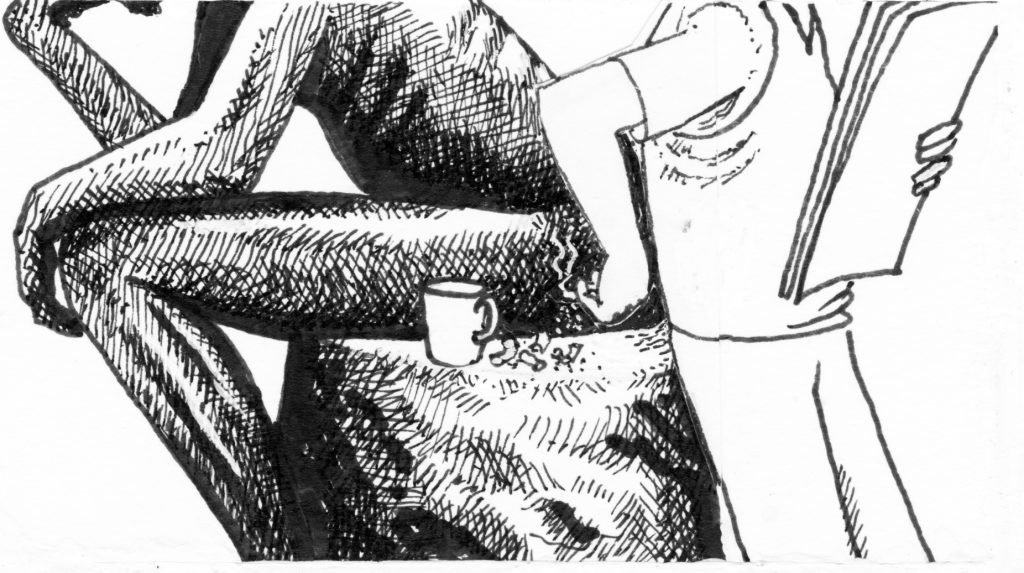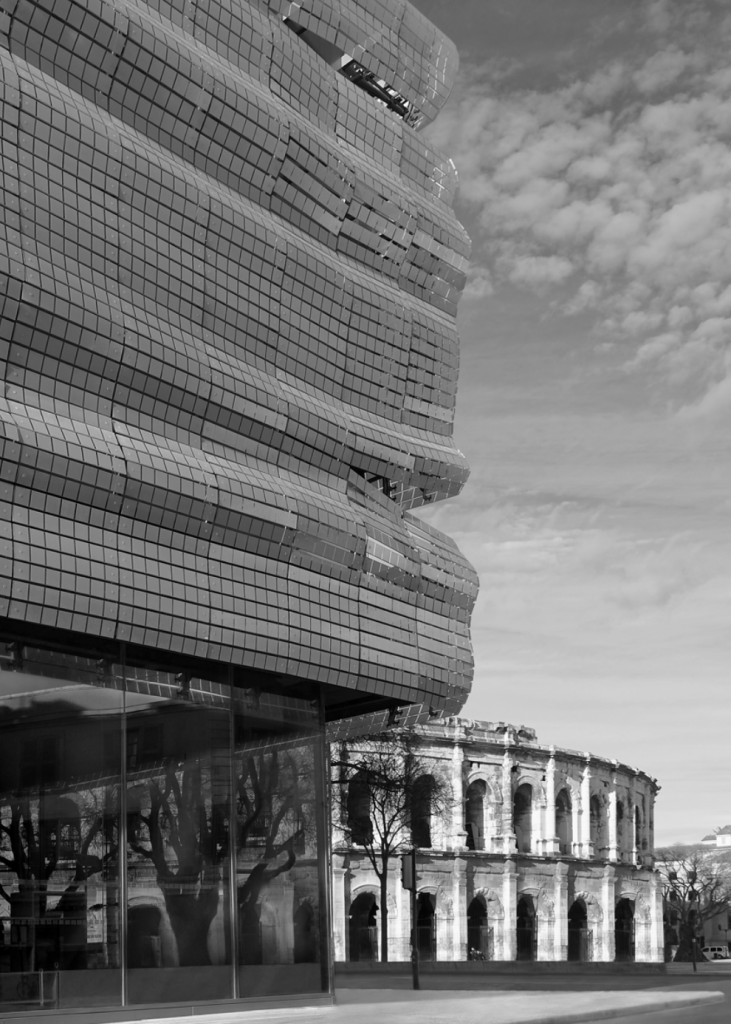Anthony Daniels

I see that the architect, Richard Rogers, is to retire at the age of 87. This is an excellent thing, of course, but unfortunately it comes seventy years too late. Rogers has done as much as anyone to make the world a little uglier (and locally, much uglier); in that sense he has been very successful. He has been a powerful and effective propagandist for inhumanity in his chosen field. No one could deny that he had an ultimate vision: namely, that of the world as a giant airport terminal.
Of course, he is not the only architect whose life would have been much better spent doing nothing on social security than in employment. I will mention in this connection only another two, Norman Foster and Elizabeth de Portzamparc. I name them because I happened to pass through Nîmes the other day, and I never cease to wonder at the effectiveness of their subversion of beauty there. But if I had to award the palm, it would be to the female of the species.

One of the characteristics of their type of architecture is that it is always expensive financially while cheap aesthetically. The architects have the sense of economy of Louis XIV and the taste of the magpie. For example, Elizabeth de Portzamparc’s Musée de la romanité (above), placed with maximum eyesore-ness opposite Nîmes’ magnificent Roman arena, is covered with bright silvery scales that look as if they have slipped from their moorings, or from a half-scaled fish. Is the building finished? The most one can say is that it is open to the public.
If Elizabeth de Portzamparc had been a cook, she would have invented dishes such as herring and vanilla ice-cream or oysters in raspberry jam. Her restaurant wouldn’t have lasted a week. As it is, she evidently believes that the greater the clash between what she builds – which is in any case inherently incompatible with anything except itself – and its surroundings, the more valuable it is as provocation, and the greater the monument to herself. She teaches architecture, incidentally: talk about corrupting youth!
But it takes two to tango, as the cliché has it. Even the worst of architects, such as Foster and Rogers, could have done nothing without powerful patrons. The question is therefore not only one of how architects came to be so destructive of civilized cities, indeed this is the less important question, but how it came about that patrons came to have so little taste. Ortega y Gasset answers implicitly in his essay The Dehumanization of Art: It has been said that the new style, taken in the widest sense, consists of eliminating those elements that are human, all too human, retaining only material that is purely artistic. This seems to imply a great enthusiasm for art. But looking at it from another angle, we are surprised to see an opposite face, that of weariness and disdain.
Ortega says, moreover, that the new style divides the population into an elite that understands, and an ignorant philistine mass that does not. (Le Corbusier is quite explicit about it.) No one, not even a nouveau riche tycoon, wants to put himself into the category of the ignorant or philistine, and so he goes along with whatever the self-appointed representative of the enlightened elite tells him. Bestriding the world like a colossus from the purely economic point of view, he is also but a humble flatterer at the court of the emperor with no clothes. Even humbler are the municipal councillors, who are aware of their own nullity.
The explanation, then, is the triumph of the propaganda campaign of the modernists. But there is never a final or ultimate explanation of anything, and so we must then go on to ask, why was the propaganda so effective?
The political and cultural magazine, Standpoint, has a regular two-page feature at its rear, one page describing somebody or something overrated, and the opposite page somebody or something underrated. In the May/June issue of this year, the two things compared were classicism and modernism in architecture. The author was Stephen Bayley, a prominent commentator on such matters.
Modernism, he tells us, ‘revels in optimism and opportunity’. That, of course, is precisely what members of totalitarian parties, communist or Nazi, like about them, and it is no coincidence (as the Stalinists used to say) that there are obvious connections between the modernist sensibility and totalitarianism. Mr Bayley, no doubt unintentionally, makes this clear when he says:
“It was the poet Arthur Rimbaud who said “Il faut être absolument moderne.” For the first time in history, from about 1870, there was a compulsion to make poetry, art and architecture which owed nothing to tradition, but were, instead, uniquely expressive of contemporary sensibility.”
Ah yes, the tabula rasa and the New Man, what crimes are committed in thy name! The fact that Arthur Rimbaud said something doesn’t make it true. In fact, what he said was both wrong and vicious: first because it fails to appreciate that no quality (by definition) is more fleeting than modernity, and that creatures such as we who live in time cannot but be modern; and second because it is an open invitation to egotism, insensibility, self-worship and ignorance. Before us nothing, after us, who cares? It is the content of modernity that counts.
Mr Bayley almost agrees. He tells us ‘terrible buildings – Grenfell, the French banlieues – are terrible not because they are modern but because they are terrible.’ But do they really owe nothing to modernism, rather than from modernity per se, and do they not take their inspiration, if that is quite the word I seek, from it? Mr Bayley once said, in his review of Professor James Stevens Curl’s book, Making Dystopia, ‘there is only a sliver of difference between Walter Gropius’s lofty Bauhaus ideal and a crap council estate’. Even if it were allowed that among the scores of thousands of modernist buildings in the world there are a handful that are not a thorn in the eye, surely the correct response to architectural modernism is Si monumentum requiris circumspice. What a devastating aesthetic effect if you do!
But Mr Bayley cares nothing for aesthetics, only for ‘optimism and opportunity.’ He tells us:
“In fact, modernism is the most complete expression of the will to design, a definition of what it is to be human, of making buildings which are appropriate, efficient, comfortable and, if at all possible, beautiful too.”
Here is the admission that for him beauty is a kind of optional extra, like electrically-heated seats in a car. It is very low on his list of priorities, as if beauty along with truth and goodness were of but minor importance in human existence.
Everything that Mr Bayley says is both philistine and inaccurate, teetering on the edge of idiocy. ‘The glory of the modernist mentality is that it is optimistic,’ he tells us. ‘It revels in the beauty and the opportunity of the here and now and the tomorrow.’ It does not occur to him that our today is tomorrow’s yesterday. Why should tomorrow’s people who revel in the beauty and the opportunity of the here and now care about what we did? No wonder so many modernist buildings are worthy only of demolition.
With regard to classicism, he says that ‘you can tell the quality of an idea by the company it keeps.’ This is a reference to Mr Trump’s executive order that from now on classicism should be the default style for new Federal buildings. But Mr Bayley is a great admirer of Le Corbusier. Le Corbusier was a fascist in the most literal sense. Et alors?